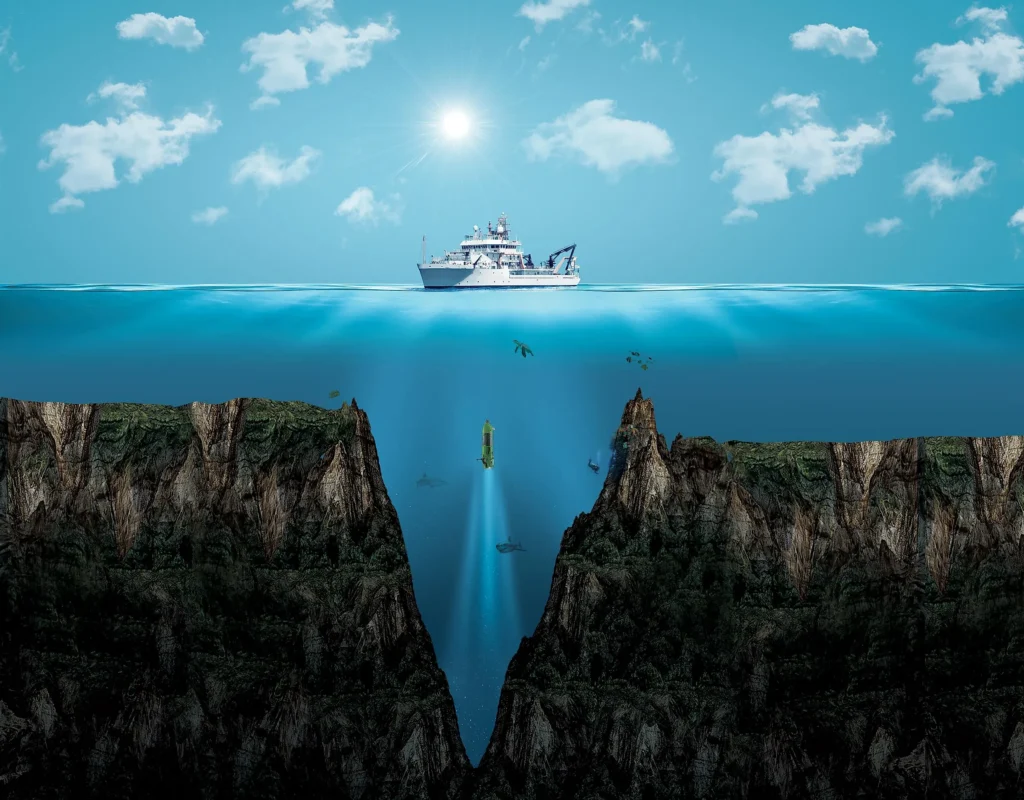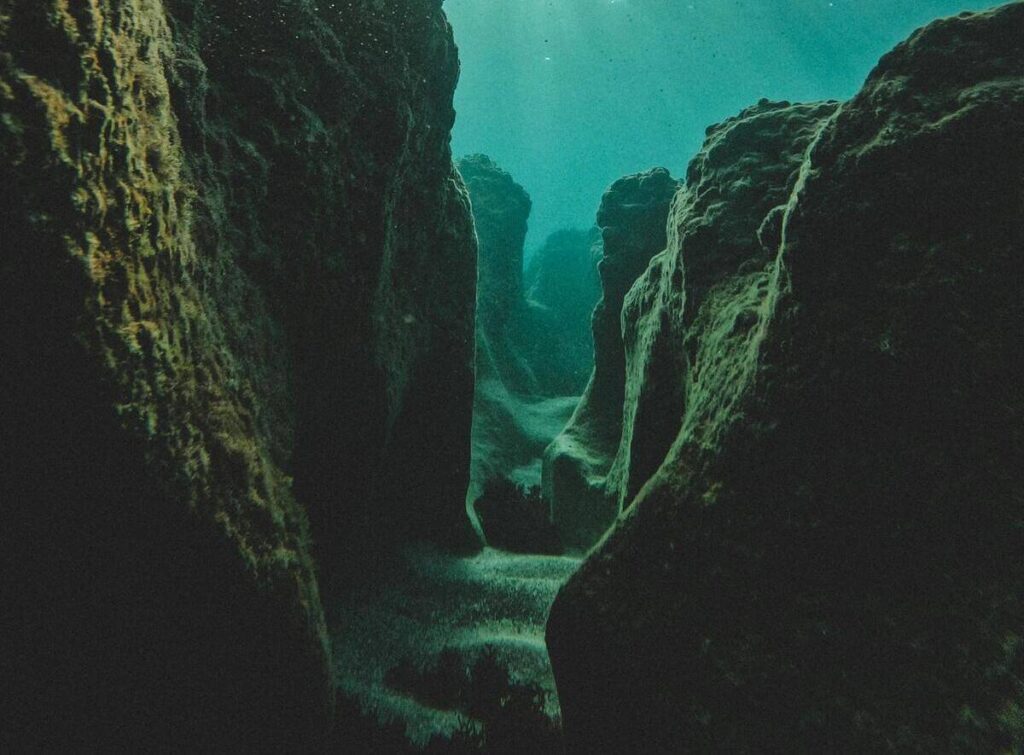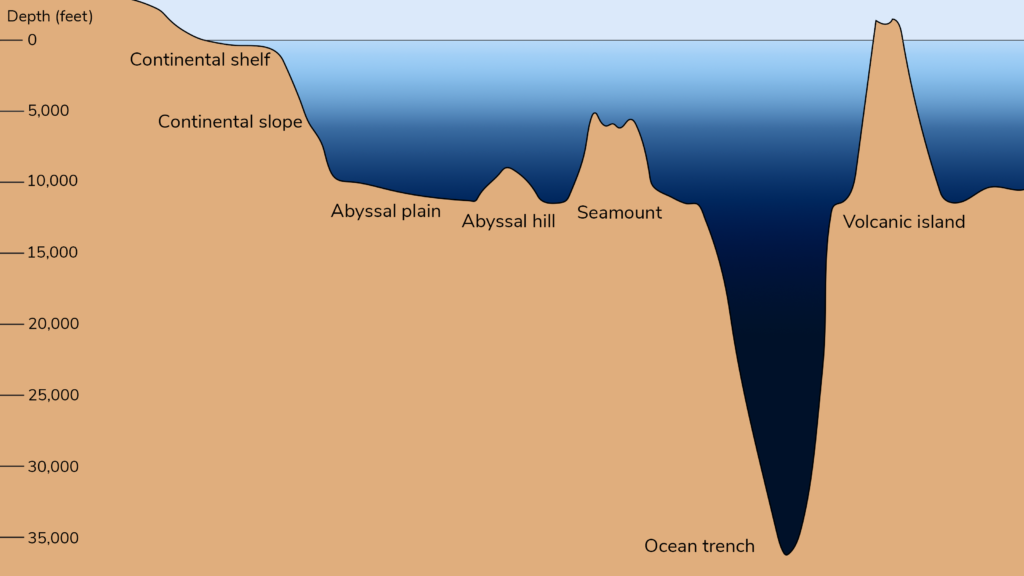Ocean Trenches
Ocean Trenches: The Deepest Parts of Our Planet

Introduction to Ocean Trenches
Ocean trenches are deep, narrow depressions in the seabed, formed by tectonic activity. They represent some of the most enigmatic and extreme environments on Earth, often plunging more than 10 kilometers below the ocean surface. These geological features are crucial to our understanding of plate tectonics, oceanography, and the biosphere.
Formation of Ocean Trenches
Ocean trenches are primarily formed through a process known as subduction, where one tectonic plate slides beneath another and is forced into the mantle. This process typically occurs at convergent plate boundaries, where the movement of the Earth’s lithosphere leads to significant geological activity. Subduction zones are often associated with volcanic arcs, earthquakes, and mountain building.
The Role of Subduction in Ocean Trench Formation
Subduction is a driving force behind the creation of ocean trenches. When an oceanic plate converges with a continental plate or another oceanic plate, the denser plate is pushed down into the mantle. This creates a trench at the boundary. The intense pressure and heat at these depths lead to the melting of the subducted plate, which can cause volcanic eruptions. The Mariana Trench, the deepest ocean trench, is an excellent example of a trench formed by subduction.
Notable Ocean Trenches Around the World
Several ocean trenches around the world stand out due to their depth, length, and the scientific discoveries they have yielded. These trenches provide a window into the dynamic processes of the Earth’s interior and host unique ecosystems.

Mariana Trench
The Mariana Trench is the deepest part of the world’s oceans, reaching a maximum known depth of about 36,000 feet (10,972 meters) at the Challenger Deep. Located in the western Pacific Ocean, east of the Mariana Islands, this trench is a focal point for scientific research due to its extreme conditions and the unique life forms that inhabit it.
Puerto Rico Trench
The Puerto Rico Trench is the deepest part of the Atlantic Ocean, with depths reaching 28,373 feet (8,648 meters). Located to the north of Puerto Rico and the Dominican Republic, this trench is associated with significant seismic activity, including some of the most powerful earthquakes in the region.
Tonga Trench
The Tonga Trench, located in the South Pacific Ocean, reaches depths of approximately 35,702 feet (10,882 meters). It is one of the most seismically active regions in the world and is known for its frequent and intense earthquake activity. The trench is part of the Pacific Ring of Fire, a major area in the basin of the Pacific Ocean where many earthquakes and volcanic eruptions occur.
Java Trench
The Java Trench, also known as the Sunda Trench, is located in the Indian Ocean, south of Java, Indonesia. It reaches depths of 25,344 feet (7,725 meters). The trench is known for the 2004 Indian Ocean earthquake and tsunami, one of the deadliest natural disasters in recorded history.
Ecological and Biological Significance of Ocean Trenches
Ocean trenches are not just geological formations; they are also unique ecosystems that support a variety of life forms. These environments are characterized by extreme conditions, including high pressure, low temperatures, and complete darkness. Despite these harsh conditions, life thrives in the form of microorganisms, invertebrates, and even larger species.
Adaptations of Deep-Sea Creatures
Creatures living in ocean trenches have evolved remarkable adaptations to survive. These include bioluminescence, specialized pressure-resistant structures, and unique feeding strategies. For example, many deep-sea organisms rely on marine snow—a continuous shower of organic material falling from upper waters—to sustain themselves.
Chemosynthetic Communities
In the absence of sunlight, some organisms rely on chemosynthesis rather than photosynthesis. Chemosynthetic bacteria convert hydrogen sulfide or methane released from hydrothermal vents into energy. These bacteria form the base of the food chain in deep-sea ecosystems, supporting a variety of life forms.
Scientific Research and Exploration
Exploring ocean trenches poses significant technical challenges due to the extreme conditions found at such depths. However, advancements in technology have made it possible to study these remote areas more closely.
Deep-Sea Submersibles and ROVs
The use of deep-sea submersibles and remotely operated vehicles (ROVs) has revolutionized the study of ocean trenches. These vehicles are equipped with advanced imaging and sampling tools, allowing scientists to explore and collect data from the deepest parts of the ocean. Notable missions include James Cameron’s descent to the Challenger Deep in the Deepsea Challenger submersible.
Importance of Ocean Trench Research
Research in ocean trenches has provided valuable insights into earthquake mechanics, plate tectonics, and deep-sea biology. Studying these regions helps us understand the Earth’s geological processes and the adaptations of life in extreme environments. Additionally, trench research can inform our understanding of climate change and biogeochemical cycles.
Challenges and Future Prospects
The exploration of ocean trenches is still in its infancy, and many mysteries remain. Challenges include the technical difficulties of deep-sea exploration, the high costs involved, and the limited accessibility of these remote areas.
Technological Advancements
Future advancements in technology will likely make deep-sea exploration more feasible and affordable. Innovations such as autonomous underwater vehicles (AUVs) and improved deep-sea sensors will enhance our ability to study ocean trenches. These technologies will enable longer and more detailed missions, providing deeper insights into these enigmatic regions.

Environmental Concerns
As interest in ocean trenches grows, so do concerns about their preservation. The deep sea is a fragile environment, and human activities such as deep-sea mining and pollution pose significant threats. It is crucial to balance exploration and exploitation with conservation to protect these unique ecosystems.
Conclusion
Ocean trenches are among the most fascinating and least understood regions on our planet. They play a critical role in geological processes, support unique ecosystems, and offer valuable insights into the workings of the Earth. As technology advances, our ability to explore and understand these deep-sea frontiers will continue to grow, unlocking new knowledge and potentially revealing more about the origins of life on Earth.
11 thoughts on “Ocean Trenches”
Thank you for writing this article. I appreciate the subject too.
What i do not realize is in fact how you are no longer really a lot more neatly-liked than you might be now. You’re very intelligent. You know thus considerably in terms of this topic, produced me in my opinion believe it from numerous numerous angles. Its like women and men aren’t involved except it is something to do with Girl gaga! Your personal stuffs excellent. At all times care for it up!
Fantastic post however I was wondering if you could write a litte more on this subject? I’d be very thankful if you could elaborate a little bit further. Kudos!
I’m often to blogging and i actually admire your content. The article has really peaks my interest. I’m going to bookmark your web site and preserve checking for new information.
F*ckin’ tremendous things here. I am very glad to peer your article. Thank you so much and i’m taking a look forward to contact you. Will you kindly drop me a mail?
Keep up the great piece of work, I read few articles on this site and I believe that your weblog is really interesting and contains sets of fantastic info .
I think this internet site holds some real fantastic info for everyone : D.
Saved as a favorite, I really like your blog!
I have been examinating out many of your articles and i can state clever stuff. I will definitely bookmark your site.
An impressive share, I just given this onto a colleague who was doing a little analysis on this. And he in fact bought me breakfast because I found it for him.. smile. So let me reword that: Thnx for the treat! But yeah Thnkx for spending the time to discuss this, I feel strongly about it and love reading more on this topic. If possible, as you become expertise, would you mind updating your blog with more details? It is highly helpful for me. Big thumb up for this blog post!
great post, very informative. I wonder why the other experts of this sector do not notice this. You must continue your writing. I am confident, you have a huge readers’ base already!